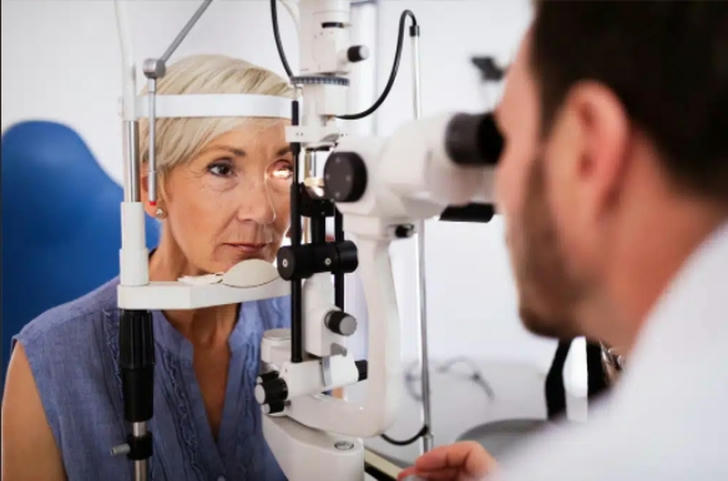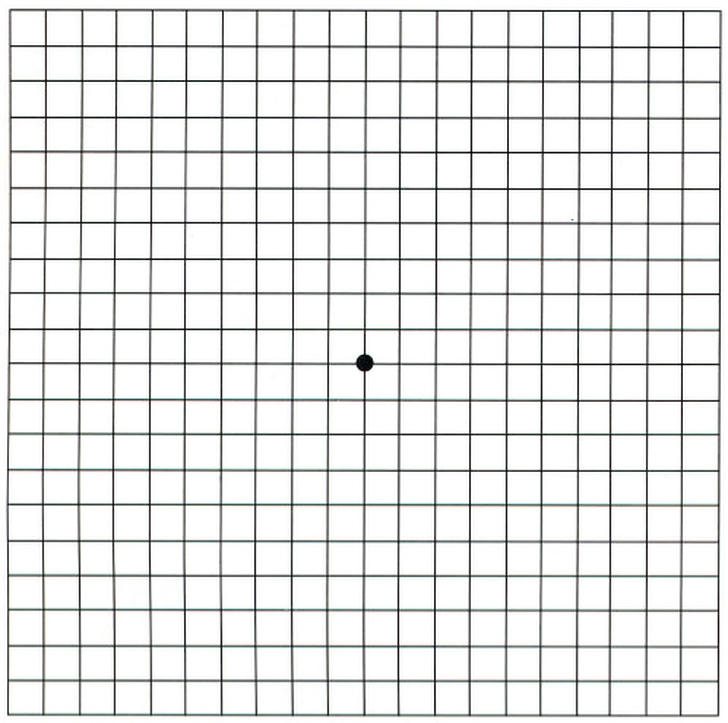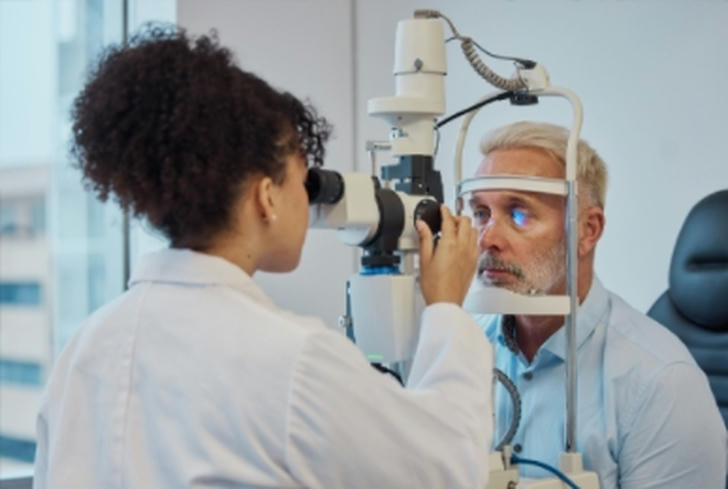Macular disease – a common enemy for people over 50
Age-related Macular Degeneration (AMD) is an eye disease that affects the central area of the retina - the macula. Macular degeneration is one of the leading causes of blindness in the elderly population and usually occurs in people over 50 years old. Although it does not cause complete blindness, it can seriously affect central vision and affect the quality of daily life.
So how to prevent and treat macular degeneration early? The following content will answer this question.

Two types of macular degeneration:
● Dry macular degeneration (non-exudative type):
It is the most common type and usually develops slowly. It is caused by the gradual degeneration and death of cells in the macula area, resulting in a gradual weakening of central vision.
● Wet macular degeneration (exudative type):
It is more serious and the course of the disease progresses rapidly. It is characterized by the growth of abnormal blood vessels in the eye, which leak fluid or bleed, further damaging the retina and causing dramatic vision loss.
Symptoms and manifestations of macular degeneration:
The symptoms and manifestations of macular degeneration vary depending on its type (dry macular degeneration and wet macular degeneration). The following are common symptoms and manifestations of macular disease:
1. Early symptoms (common to both dry and wet macular disease)
Whether it is dry or wet macular disease, the early symptoms are usually not obvious, and there is no obvious vision loss. The only manifestations may be:
Blurred vision: When reading or performing fine operations, the eyes may feel blurry, especially when looking at small print, books or looking far away.
Frequent need to change glasses: Patients may find that they need to constantly change the degree of glasses, even though the degree of glasses has not changed significantly.
Poor night vision: As the disease progresses, patients will feel a significant decrease in vision at night or in low-light environments.
Eye fatigue: Due to the degeneration of photoreceptor cells in the macula, the eyes may feel tired or uncomfortable when used for a long time.
2. Diagnosis and evaluation
Since the symptoms of macular disease may not be obvious in the early stages, early diagnosis is very important. Common examination methods include:
Amsler grid test: This test is used to check whether there are deformations or dark spots in the retina. The patient needs to look at a grid pattern to check whether there are curved straight lines, blurry or blank areas.

Amsler grid test: see image above
- Place the grid table 30 centimeters away from your eyes. The light should be clear and even.
- If you have presbyopia or myopia, you must wear your original glasses for testing.
- First cover your left eye with your hand and gaze at the black dot in the center of the grid with your right eye.
- Repeat steps 1 to 3 to check the left eye.
Normally, the viewing grid is a checkerboard-shaped straight line; if the picture appears blurred, distorted, or black dots spread out, you should go to an ophthalmologist for examination as soon as possible.
Fundus examination: Ophthalmologists will observe changes in the macular area through fundus examination, whether there is pigmentation or new blood vessels.
OCT (Optical Coherence Tomography): Used to evaluate the details of the retinal layers and detect fluid accumulation or bleeding in wet maculopathy.
Fluorescein fundus angiography: Used to check whether there are abnormalities in the retinal blood vessels, especially in patients with wet maculopathy.
Risk factors for maculopathy:
The risk factors for maculopathy (Age-related Macular Degeneration, AMD) are mainly related to age, genetics, lifestyle, environmental factors, etc. Here are some of the main risk factors:
1. Age
Age is the most important risk factor. Maculopathy mainly affects the elderly, especially those over 50 years old. The incidence of maculopathy increases significantly with age, especially in the elderly population over 65 years old.
2. Family history and genetic factors
If there is a patient with maculopathy in the family, the risk of other family members developing the disease will increase. Studies have shown that genetic factors play an important role in the pathogenesis of maculopathy.
3. Smoking
Smoking is an important controllable risk factor for macular disease. Smoking not only increases the incidence of macular disease, but also accelerates the progression of the disease. Smoking damages the retina by increasing oxidative stress and reducing blood flow.
4. Poor diet and malnutrition
Unhealthy eating habits, such as excessive intake of fat and sugar, lack of antioxidants, vitamins C and E, and nutrients such as zinc and lutein, may increase the risk of macular disease. Studies have shown that a diet rich in green vegetables and fruits and omega-3 fatty acids can reduce the risk of macular disease.
5. Obesity
Obesity is related to the occurrence of macular disease. Obesity may indirectly affect eye health by causing chronic diseases such as hypertension and diabetes.
6. Hypertension
Hypertension may damage blood vessels in the eye and increase the risk of macular disease. Hypertension patients are usually accompanied by endothelial dysfunction, which affects the blood supply to the eye and may cause the occurrence of macular disease or aggravate the condition.
7. Sun exposure
Long-term exposure to ultraviolet (UV) light, especially when not protected by sunglasses, can damage the retina and increase the risk of macular degeneration. UV light is thought to be a factor in photodamage and degeneration of the macula.
8. Race and genetic background
White population: The incidence of macular degeneration is higher in white populations, especially in European Americans and Northern Europeans, and the course of the disease is more severe.
African and Asian populations: The incidence of macular degeneration is lower, and the course of the disease is usually milder.
9. Gender
Women are more susceptible: Studies have shown that women are generally at higher risk of macular degeneration than men. This may be related to women's longer lifespan, changes in hormone levels, and genetic factors.
10. High cholesterol
High cholesterol is a risk factor for cardiovascular disease, which may affect the health of blood vessels in the eye, thereby increasing the risk of macular degeneration.
11. Lack of exercise
Lack of regular physical activity is also associated with the risk of macular degeneration. Moderate exercise helps maintain healthy blood pressure, blood sugar, and weight, all of which play a protective role in eye health.
12. High light environment and pollution
Frequent exposure to high light environments (such as working under strong light for a long time or outdoor activities) or areas with severe air pollution may increase oxidative stress in the eyes and lead to the occurrence of maculopathy.
There are many risk factors for maculopathy, among which age, genetics, and lifestyle (such as smoking, poor eating habits, and lack of exercise) play an important role. Maintaining a healthy diet, avoiding smoking, controlling weight, exercising moderately, and regular eye examinations can effectively reduce the risk of maculopathy.

Prevention of maculopathy:
The prevention of maculopathy (Age-related Macular Degeneration, AMD) mainly relies on a healthy lifestyle and some known medical interventions. Although the occurrence of maculopathy cannot be completely avoided, the following methods can effectively reduce the risk of disease or slow the progression of the disease:
1. Maintain a healthy diet
Antioxidant-rich diet: Studies have shown that foods rich in lutein, zeaxanthin, vitamins C, E, and zinc can help slow the development of maculopathy. Increase Omega-3 fatty acid intake: Fish (such as salmon, sardines, cod) and flax seeds and walnuts are good sources of Omega-3 fatty acids. Reduce fat and sugar intake: A high-fat, high-sugar diet increases oxidative stress and may accelerate the onset of macular disease.
2. Avoid smoking
Quit smoking: Smoking is an important controllable risk factor for macular disease, and smokers are at a significantly increased risk of developing macular disease. Smoking affects retinal health by increasing free radicals and oxidative stress, reducing blood flow to the eye. Therefore, quitting smoking is a key step in preventing macular disease.
3. Protect your eyes from UV damage
Avoid strong light exposure: Reducing exposure to strong sunlight, especially during high light intensity periods at noon, is an effective measure to protect your eyes.
4. Regular eye examinations
Early detection: Regular eye examinations, especially for people over 50 years old, can help detect signs of macular disease early. Ophthalmologists can detect lesions in time and take corresponding preventive or therapeutic measures by examining the fundus and retinal conditions.
5. Maintain a proper weight and a healthy lifestyle
Weight control: Obesity is a risk factor for cardiovascular disease, which indirectly affects retinal health. Maintaining a healthy weight, especially controlling waist circumference, can effectively reduce the risk of macular disease. Increase exercise: Regular physical exercise helps maintain normal blood pressure, blood sugar levels and blood lipid levels, all of which protect eye health. Exercise can also improve blood circulation and enhance the nutrient supply of the retina.
6. Maintain a good lifestyle
Sufficient sleep and avoid excessive fatigue: Maintaining a regular schedule and sufficient sleep can help repair and recover the eyes, slow down eye fatigue and aging.
Conclusion
Although macular disease is an age-related eye disease that cannot be completely avoided, it can effectively reduce the risk of its occurrence and delay the progression of the disease by maintaining a healthy diet, good living habits, regular eye examinations, avoiding smoking, and reducing ultraviolet exposure. These preventive measures are essential for eye health, especially for the elderly.
